|
|
Post by tod2 on Mar 8, 2014 14:48:31 GMT
"The bush veld is a place that grips you and subdues you and makes you one with yourself" - Jan Smuts How true those words are. All the woes of the world are forgotten when you surrender your soul to the wild open space of Kruger National Park. No wonder we love to take this journey every year and if possible more than once. Like all people who adore wildlife, we are interested in the big cats as well as everything else including rocks, trees, flowers and birds. So let's begin with the King. Here are THE LIONS.  s285.photobucket.com/user/dotsoar/slideshow/Wonderful%20Kruger%20Park s285.photobucket.com/user/dotsoar/slideshow/Wonderful%20Kruger%20ParkThis picture of a male lion is made up entirely of glass beads. Every bead had to be carefully placed before glueing it into position. The artist is a lady and I have met her. When she showed me photos of her work I made a special effort to see the various animal portraits hanging in the reception areas of every camp. The Beaded Lion 
|
|
|
|
Post by Deleted on Mar 8, 2014 16:55:03 GMT
 I would tend to imagine that the beads are placed over an enlarged photograph....?
|
|
|
|
Post by tod2 on Mar 9, 2014 7:05:04 GMT
Yes, absolutely. The artist Mrs. Da Silva, said she first sketched each animal from a picture, then proceeded with the bead work. I should imagine it was pasted to a piece of board first as the backing. It takes her 3 months to complete one bead-photo.
She donated her bead-animals to each camp. The one she did for Shingwedzi Camp was washed away in the January floods as the water got as high as the ridge of the thatched roof.
|
|
|
|
Post by tod2 on Mar 9, 2014 8:40:16 GMT
THE ELEPHANTS   "  " alt=" " alt="![]()
This is how you come across most elephants in the park - just off the road
 " So when we saw this lone elephant high on an outcrop of rocks, we were very surprised. 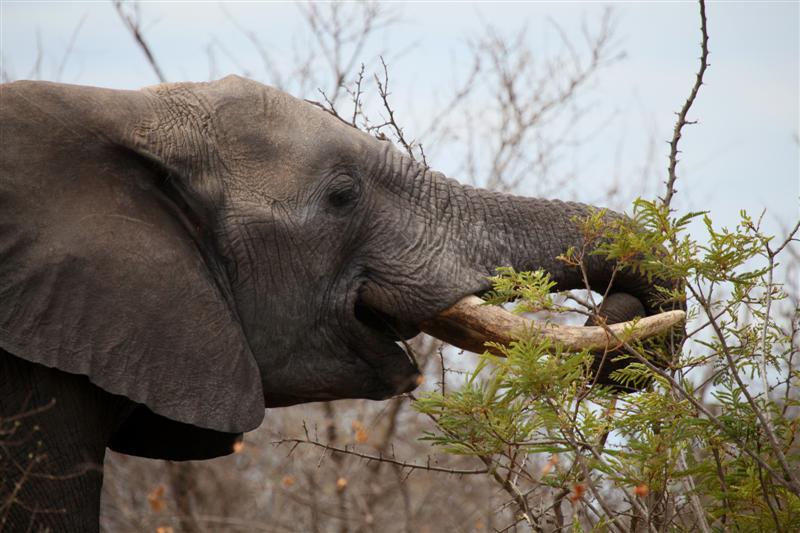 "   " During a picnic lunch at Pafuri picnic site we were urgently called away to the Luvuhu river bank to see a large herd of elephants coming down to cool off in the water. What an interesting sight it was! [img src=" ![]() imagizer.imageshack.us/v2/xq90/24/ihgi.jpg imagizer.imageshack.us/v2/xq90/24/ihgi.jpg" src=" "  " [img src=" ![]() imagizer.imageshack.us/v2/xq90/691/fk0g.jpg imagizer.imageshack.us/v2/xq90/691/fk0g.jpg" src=" " The spring rains had only just begun and it was dry and hot, especially at midday. We spotted this little group seeking shad under a Marula tree. The little babies were sleeping on their sides. 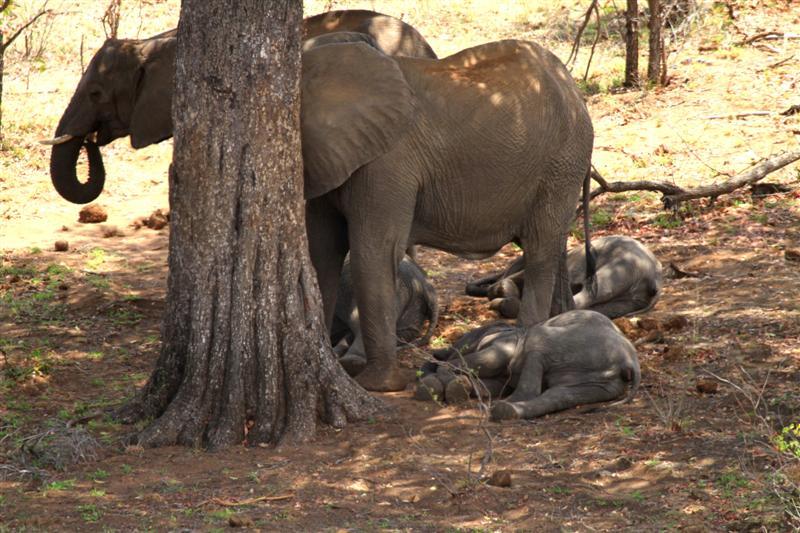  This short video showed they were alive An ear moved! It is always a thrill when a large herd of elephants approaches and either walk alongside the road and usually cross over it to reach a river. Note how the younger "teenage" elephants give us a sniff and raise their trunks, signalling they are well aware of our close proximity. |
|
|
|
Post by questa on Mar 9, 2014 10:30:34 GMT
Tod2, your elephants are magnificent...it is impossible to pick out one or two as they are all so good. I love watching them slide down the embankment to the river.
|
|
|
|
Post by htmb on Mar 9, 2014 12:30:54 GMT
Fascinating and delightful, Tod!
|
|
|
|
Post by mossie on Mar 9, 2014 14:56:42 GMT
Superb
|
|
|
|
Post by bjd on Mar 9, 2014 17:55:46 GMT
Wonderful, Tod. How lucky you are to be able to see this by just driving a few hours.
|
|
|
|
Post by Deleted on Mar 9, 2014 18:05:56 GMT
Magnificent, but I am wondering about the lack of mats for the elephants to wipe their feet before they cross the road.
|
|
|
|
Post by tod2 on Mar 10, 2014 5:46:32 GMT
More bead portraits - This one of a crocodile is titled "Mr. Sabie" and hangs in the reception at Lower Sabie Camp. I thought it should really be on display at our first camp of the trip, Crocodile Bridge. Croc Bridge camp is usually our first stop because it is only just inside the very southern region of Kruger, off the main road to Maputo and Swaziland and easily reached within a day. 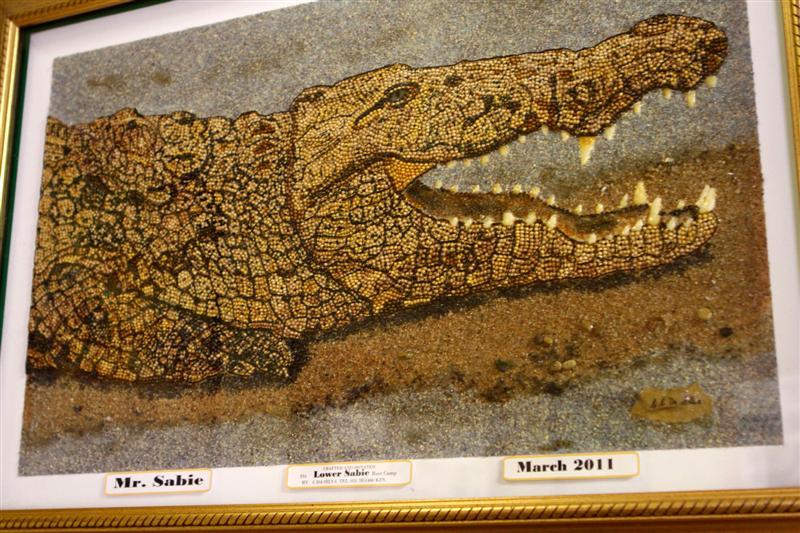 The camp is small by comparison to Satara, and Skukuza standards but that is why we like it so much. This is a little remembrance garden as you drive to the rondawels overlooking the Crocodile River.   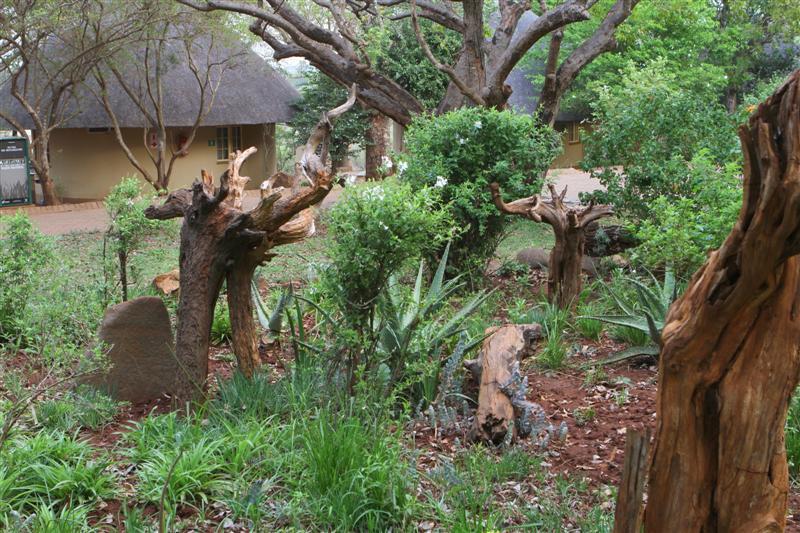 This a Snuff-box tree growing in the camp.- (Oncoba spinosa) Never grows more than 3-5m in height   The flowers are referred to as "the Fried Egg Flower" and are rather beautiful.  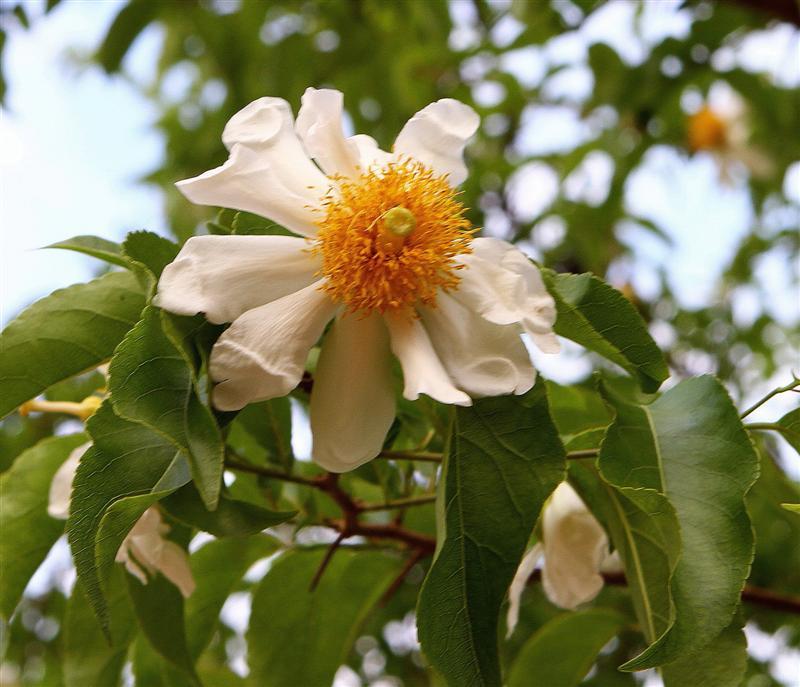 The fruit resembles a cricket ball and is about the same size.   Tourists rush over to the boundary fence to catch a glimpse of the resident hyena. He has been there on the last three times we have stayed in Croc Bridge camp. Not fazed at all by the attention he goes to lie down for a snooze.    This Beaded Leopard hangs in the reception of Crocodile Bridge Camp. He has a rather challenging gaze.  |
|
|
|
Post by tod2 on Mar 10, 2014 9:03:34 GMT
|
|
|
|
Post by tod2 on Mar 10, 2014 10:40:28 GMT
Straying away from the animals for the time being, it is an advantage to know something about the geological history of Kruger Park which predates the arrival of humans, or that of the dinosaurs......plants and even bacteria are a recent phenomena by comparison. In fact one has to cast ones mind back three and a half billion years to fully appreciate the park's earliest history. During the cooling of the rocks and tectonic movement, volcanoes smothered the landscape with lava, capping existing geological formations, much like chocolate sauce poured over ice-cream cones. Outpourings such as these resulted in the basalt and rhyolite formations of Kruger today. In the northern half of Kruger the land is flat and because there had been a tremendous amount of controlled burns, the horizon was clearer than ever. In the distance a pair of pyramids appeared. What! Were the Egyptians here too? Not likely;y - these pyramids are Syrenite intrusions that protrude from the landscape at Masorini Archaeological Site. 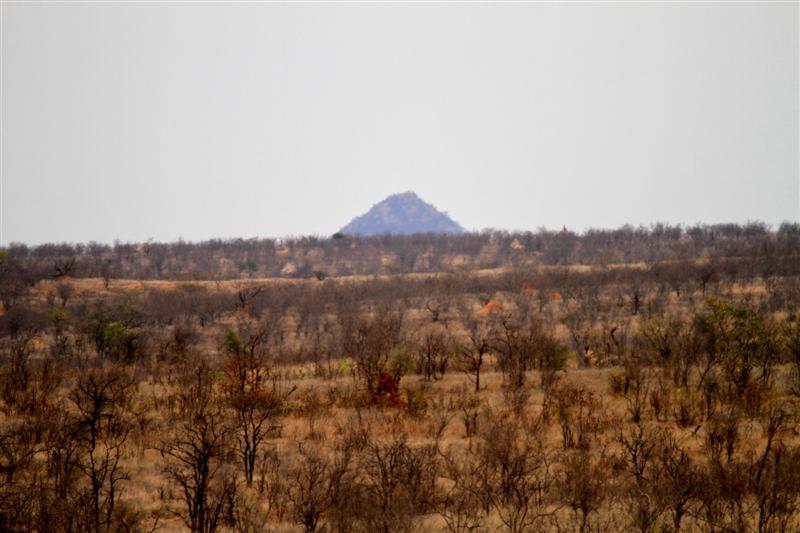   The rocky outline becomes apparent the closer you get and disappointingly realize it's not a 'real' pyramid...but maybe even a better one made from nature alone. 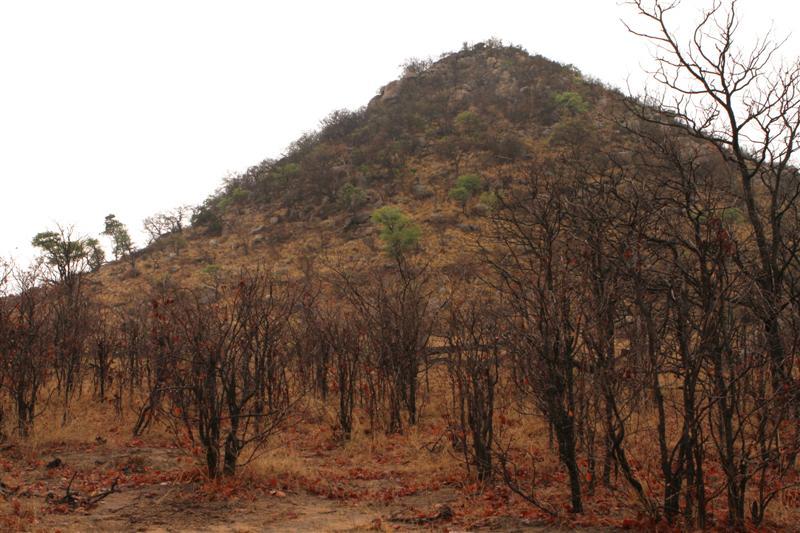  |
|
|
|
Post by questa on Mar 10, 2014 12:43:45 GMT
I wonder if these formations didn't plant the idea of pyramids in Egyptian minds long, long ago?
and those pups are so terminally cute, pity they have to grow so ugly
|
|
|
|
Post by tod2 on Mar 10, 2014 14:30:49 GMT
Well, who knows?? After all Egypt is in Africa....not only that, Kruger Park is only a stones throw away from the east coast and straight up through the Red Sea if you wanted to come by ship. Continuing with a bit of history - Kruger has numerous places where incidents have occurred over it's history. The names will mean little if anything to most people but I would like to show you how one comes across these places which are marked usually by a stone pillar.   www.panoramio.com/photo/16948865 www.panoramio.com/photo/16948865This plaque refers to the Boer War.    Then you get signs like this....where someone has played a joke on us....we called it the 'monkey sign'!  |
|
|
|
Post by Deleted on Mar 10, 2014 15:23:55 GMT
The landscape with the semi-charred vegetation is beautiful, having not yet reached the "dusty" phase.
I'm trying to imagine what it must be like to go to school in South Africa and learn about all of these events that the rest of the world mostly ignored, if only because the country was so far away from us. I imagine that South Africa and Australia have a lot in common in that department. Then again, in both countries, the history books have been revised so much in the last 50 years that the younger and older populations have probably learned wildly different things and might even have difficulty discussing a number of historical matters.
|
|
|
|
Post by tod2 on Mar 10, 2014 16:31:29 GMT
I can't even begin to imagine what they are learning. If it's anything like in my day, I spent three years learning every aspect of the Voortrekkers. Ask me what they ate, what they used as medicine, how they reacted in times of attack, and right down to the toys children played with and the clothes they wore and why.
That was because Germany had just been beaten in WWII and a lot of Afrikaners were German sympathizers. I was at a very pro-Afrikaans school.
Today I should imagine it's all about the "Kings" and Chiefs of African cultures.
To be honest, nobody knew a thing about them except historians and then it was up to the education department to decide what and what not to include.
I remember my father going to the school and almost ringing the principals neck because a remark was passed against 'the English'.
Even my class teacher was highly critical of anything English.
Maybe we were not so dumb as to notice - we conveyed it all back to our parents!
|
|
|
|
Post by htmb on Mar 10, 2014 21:14:31 GMT
Tod, thank you for educating us with your wonderful photographs, video, and explanations. I always learn so much by following your most interesting reports.
Looking forward to more!
|
|
|
|
Post by tod2 on Mar 11, 2014 11:56:48 GMT
Thanks for checking in to my story htmb! A bit more to come. Not a single person feels they have had their money's worth until they have spotted a leopard. An extremely difficult task as these magnificent creatures are loners, secretive, and a bit skittish. It is no wonder then that we were over the moon to be able to photograph this beauty.   This is the bead leopard hanging in the Pretoriuskop camp - our third camp for a few days.  During the day it is wise to stop around noon and get some sustenance - and also use a very welcome toilet stop. This is the public picnic area and toilets at Satara Camp - the camp only second to Skukuza in size. Being right in the middle of the park, halfway between the north and the south, it is extremely popular. We are not fond of the bigger camps, preferring to be left to wander around the camp taking photos without the interruption of too many humans. The art looked like it was still a work in progress in some places. s285.photobucket.com/user/dotsoar/slideshow/Kruger%20Story/Artworks?sort=3 |
|
|
|
Post by tod2 on Mar 11, 2014 13:35:42 GMT
We moved camps from Croc Bridge to Pretoriuskop but in between we had to spend one night at our favourite 'little' camp - Malelane. It is so small ( only 5 rondawels) that it doesn't even have a reception. This check-in facility has to be done at the next door camp, Berg-en-dal. For such a one-nighter you don't even unpack a thing. There is no cooking in the huts except for a very nice covered BBQ area, or a communal kitchen. I have roasted a deboned shoulder of lamb in their large gas cooker! Not this time however. On kruger maps - along the H1-3 near the Kumana Dam, you will see a baobab marked as the most southern tree of that variety. NOT true! In Malelane camp are several young baobabs.  The few beds that have the daily linen change can have the sheets and towels transported by wheelbarrow!   In the morning we heard millions of bees buzzing around the blossoms on this large tree.  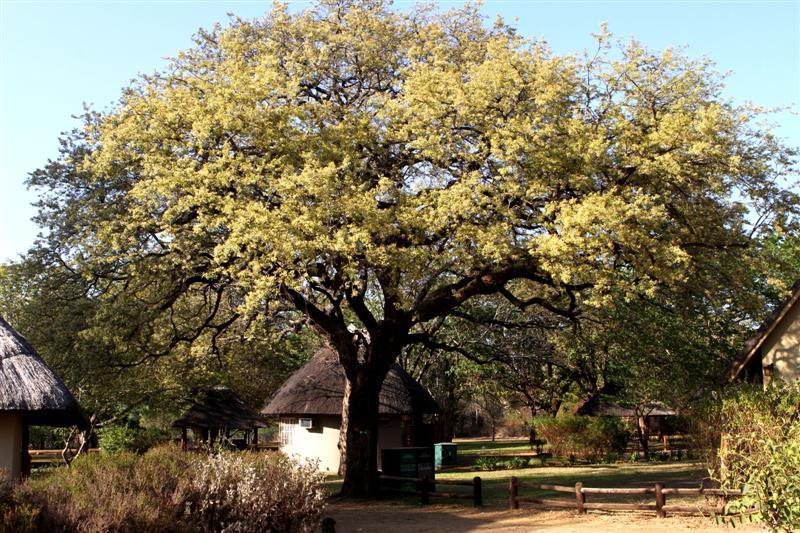  Pretoriuskop Camp has been offering visitors accommodation since the late 1920's. I like staying there for a few days because it's close to all the attractions around Skukuza without having to book into that giant. There are two special things about Pretoriuskop. No, three things... First it has virtually no mosquitos because of it's elevation. Secondly it has a natural rockpool which has been made into a clean and refreshing large swimming pool. Thirdly, the massive spreading Natal Mahogany tree, called the "Indaba Tree". This is where Harry Wolhuter, the original ranger of the camp, used to hold staff meetings or discuss business matters with the leaders of the local people. This is the same man who whilst returning from a patrol in 1903, was attacked by a lion as he rode through the long grass. Not only did he kill the lion with a pocket knife ( I'm thinking Crocodile Dundee sized pocket knife...)but survived the ordeal. One can organise to follow his trail in the southwest of the park with a guide. The skin of the lion and his knife are on view in the Stevenson-Hamilton Memorial Library and Museum. We wanted to visit it but it was undergoing major renovations.  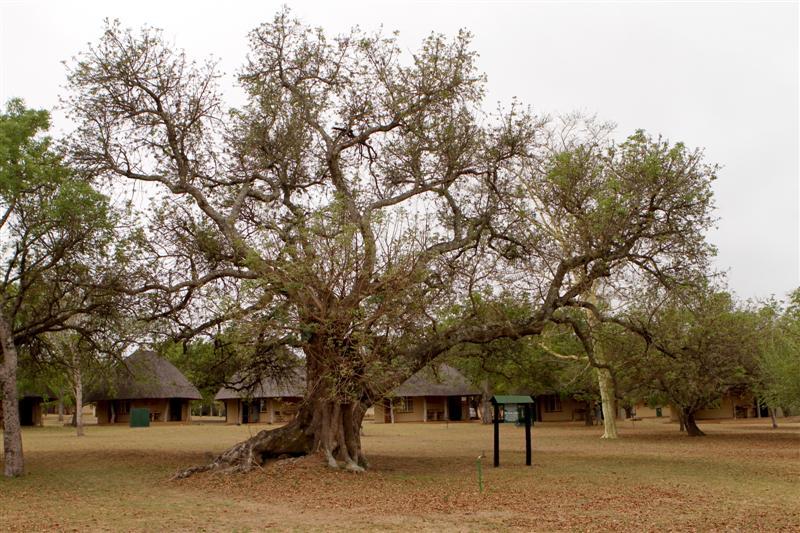   |
|
|
|
Post by fumobici on Mar 12, 2014 3:36:11 GMT
This is beyond wonderful, thanks so much for sharing these images. The photos and video of the animals are not only beautiful, they are also emotionally powerful.
|
|
|
|
Post by tod2 on Mar 12, 2014 9:51:56 GMT
|
|
|
|
Post by tod2 on Mar 12, 2014 15:24:50 GMT
Bird Hides are wonderful places for sitting quietly and munching on a sandwich, knocking back a cold drink or just paying attention to what may not be so obvious at first. We had been sitting in the Gardenia Hide for some time with a few birds darting around and one or two hippos grunting in the pool further along. Out the corner of my eye I noticed a movement. Not sure I stared at the tree right next to the hide. Yes!, It moved again. Then, as it slowly and gingerly appeared I realized it was a Spotted Green Bush Snake - quite harmless. You never drive, walk or even sit around for very long before there is some animal or bird attraction. These are some of them including fish and strange looking birds: The harmless Bush snake.   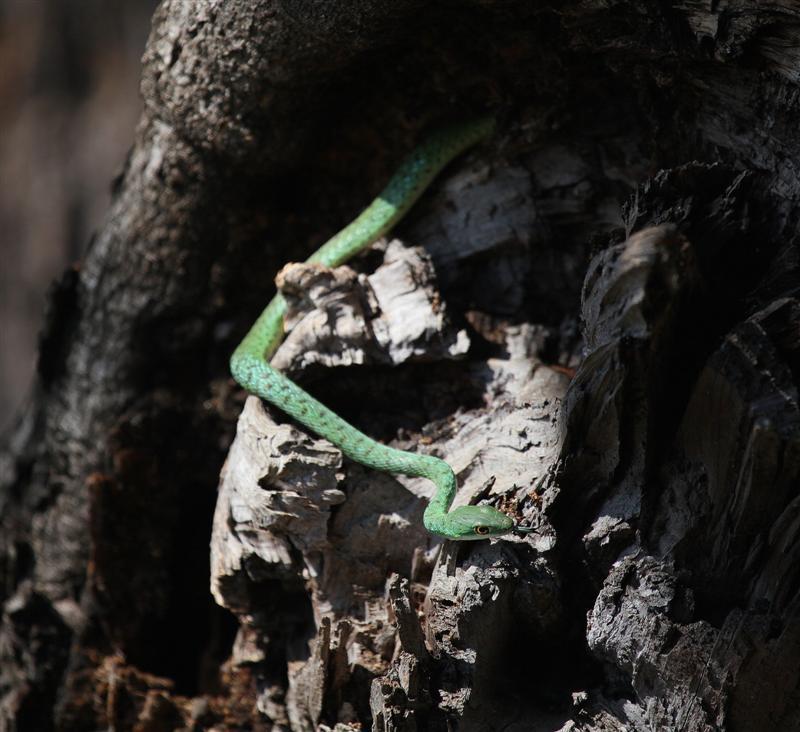  Mom - a Black Crake with her red legs and luminous beak. 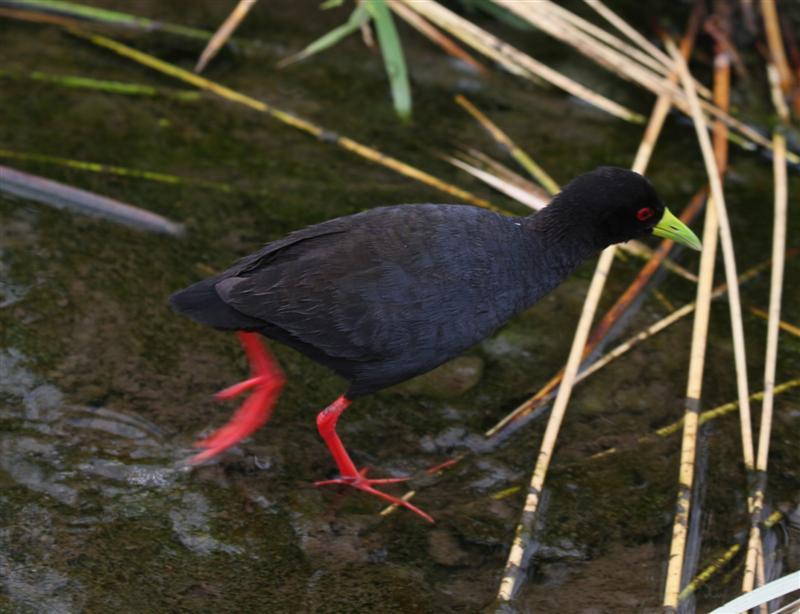  Her little chick pecking nearby.  A Blacksmith - Plover stands guard near her newly hatched chick.    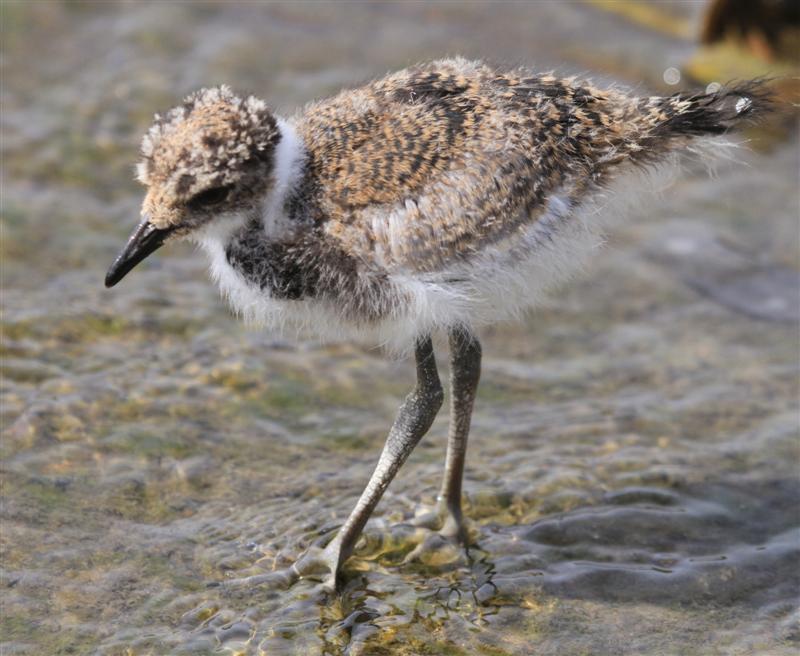 Striding confidently along is a very rare Longlegged Buzzard.  Hamerkop   Swainson's Francolin  Barbel - or Catfish   Female Paradise Flycatcher  The Coucal  Emerald Spotted Dove   Still adding names to the photos.... |
|
|
|
Post by bjd on Mar 12, 2014 16:49:17 GMT
More wonderful pictures, Tod. It doesn't seem fair that most European birds are so boring looking compared to the colourful ones in South Africa.
I do admit that I would certainly have a fit if I saw a long snake like that while I was sitting around. Harmless or not.
|
|
|
|
Post by questa on Mar 12, 2014 21:37:06 GMT
Oh, Tod, what a brilliant set of pictures, how patient you must be to get so many critters composing themselves so well for your camera. Keep'em coming, please.
|
|
|
|
Post by mossie on Mar 13, 2014 11:39:36 GMT
Marvellous. Envy you for your patience and ability. That rock fig tree looks creepy, as if it is crawling over the ground or rock.
|
|
|
|
Post by lugg on Mar 14, 2014 20:13:18 GMT
What a wonderful report -yet again Tod . Of course I love the elephant pics and videos. But ... how lucky are we are to see your leopard pics - wow!! Most of all love the holistic views - geology, flora and fauna ... all covered so well. Pretoriuskop looks such a great place to stay ... maybe one day ?
|
|
|
|
Post by tod2 on Mar 15, 2014 12:44:30 GMT
Found all over the park are warthogs. Most are shy and very wary of visitors who stop to photograph them and soon run off into the bush with their tails stuck high in the air. They are an ugly animal according to humans but I bet there is a lot more to them than just fearsome looks! Here are some we managed to photograph. What did I hear you say?! I'm such a pretty lady?  Oh, that's OK then, you may take my picture...  This is my cousin - a fine figure of a warthog in anyone's book...   And this is granfer Walter Warthog - responsible for all these little runts around here...  School busload scares the warthogs we were filming......grrrrr Granfer's bit on the side - with her brood  Aren't I just so oink oink cute?!  We want some milk! |
|
|
|
Post by bjd on Mar 15, 2014 13:17:43 GMT
When I went on safari in Kenya, there was a tame warthog near the shop where the van stopped. Even when animals are not especially attractive (I'm being kind), when you can get right close to them, you don't feel the same way as when you just see a picture. I took a picture of that warthog too, although I didn't pet it. But it did come right up to say hello.
I realize too that it may have been because there were few visitors -- the "War on Terror" was on and the parks were quite empty of tourists.
|
|
|
|
Post by tod2 on Mar 15, 2014 13:51:16 GMT
bjd - tame warthogs are known in Kruger too! Well, lets say not as tame as coming to say 'hello' but not afraid of humans and don't run off. These are found on the Skukuza Golf course where they munch the short green grass on their front knees. I never saw any that had very large tusks.
Questa - I'm still going to send in a few more photos.
|
|
|
|
Post by htmb on Mar 15, 2014 14:48:49 GMT
Tod, all your photos are wonderful, but some are quite exceptional. I think the first thread pic of the lion and your first elephant photo are my favorites of the moment.
I'm really enjoying this thread. As always, you do such a nice job with your reports!
|
|